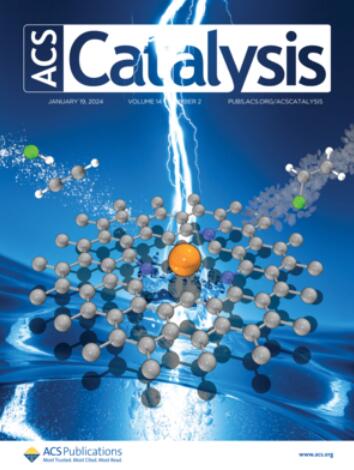Unveiling Universal Reactivity Descriptors of Metal Clusters toward Dinitrogen Activation: A Machine Learning Protocol with Three-Level Feature Extraction
IF 11.3
1区 化学
Q1 CHEMISTRY, PHYSICAL
引用次数: 0
Abstract
The activation of dinitrogen (N2) by metal clusters is a fundamental challenge in chemistry and has been extensively studied. However, previous studies have primarily focused on case-by-case interpretations of experimental reactivity, resulting in a lack of universal reactivity descriptors and predictive models that can quantitatively estimate reaction rates and elucidate structure–activity relationships. In this study, we develop predictive, interpretable, and transferable machine learning models for metal cluster reactivity toward N2, employing a systematic and hierarchical feature extraction strategy that generates electronic and intrinsic features from three structural levels. Crucial features influencing cluster reactivity were identified, and the mechanisms by which these features govern reactivity were elucidated. To enhance model robustness and transferability, pairwise learning (data augmentation) and feature interaction (feature augmentation) strategies were employed, leading to a deep neural network model that correlates feature differences with reaction rate differences. Trained on 159 homonuclear metal clusters, the model demonstrates satisfactory transferability to 57 heteronuclear metal clusters, enabling reaction rate predictions based on their feature differences. This work presents an expert-guided machine learning protocol for developing generalizable models to predict and understand metal cluster reactivity.

求助全文
约1分钟内获得全文
求助全文
来源期刊

ACS Catalysis
CHEMISTRY, PHYSICAL-
CiteScore
20.80
自引率
6.20%
发文量
1253
审稿时长
1.5 months
期刊介绍:
ACS Catalysis is an esteemed journal that publishes original research in the fields of heterogeneous catalysis, molecular catalysis, and biocatalysis. It offers broad coverage across diverse areas such as life sciences, organometallics and synthesis, photochemistry and electrochemistry, drug discovery and synthesis, materials science, environmental protection, polymer discovery and synthesis, and energy and fuels.
The scope of the journal is to showcase innovative work in various aspects of catalysis. This includes new reactions and novel synthetic approaches utilizing known catalysts, the discovery or modification of new catalysts, elucidation of catalytic mechanisms through cutting-edge investigations, practical enhancements of existing processes, as well as conceptual advances in the field. Contributions to ACS Catalysis can encompass both experimental and theoretical research focused on catalytic molecules, macromolecules, and materials that exhibit catalytic turnover.
 求助内容:
求助内容: 应助结果提醒方式:
应助结果提醒方式:


